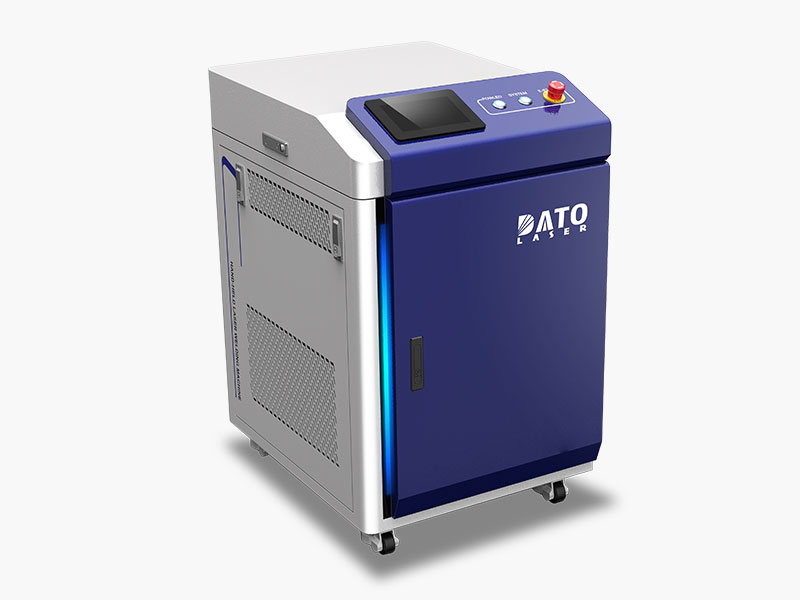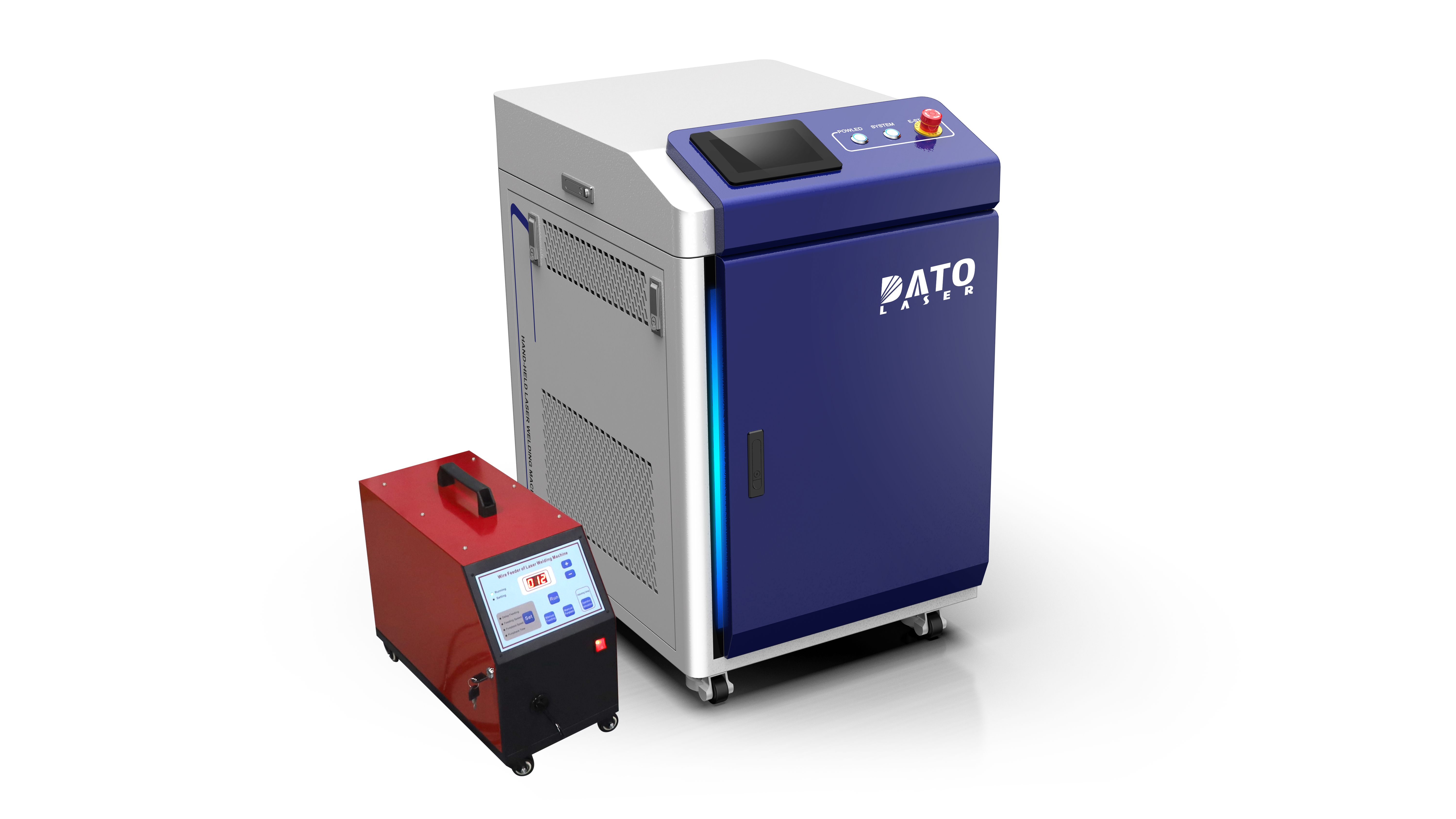How Deep Can a Fiber Laser Welding Machine Penetrate Metal?

Understanding the Penetration Depth of Fiber Laser Welding Machines
When investing in a laser welding machine, one of the most critical factors businesses consider is welding penetration depth. The ability to penetrate different metal thicknesses determines the machine’s efficiency and suitability for various industrial applications.
At DATO and Leapion, we specialize in advanced fiber laser welding technology that delivers precise, deep welds with high efficiency. Since 2007, our commitment to innovation and quality has helped businesses worldwide optimize their metal welding processes.
Factors That Influence the Welding Penetration of Fiber Laser Machines
Laser Power Output
The power of a fiber laser welding machine is one of the primary factors influencing penetration depth. Lower-powered lasers, such as 500W to 1kW, are ideal for thin materials like stainless steel sheets, while high-power lasers ranging from 3kW to 10kW can achieve deeper penetration on thicker metals.
For instance, a 3kW fiber laser welding machine can penetrate up to 6mm in stainless steel, whereas a 6kW laser can reach up to 12mm in a single pass. Higher power levels allow for deeper penetration without compromising weld quality.
Material Type and Thickness
Different metals absorb laser energy at varying rates, affecting the penetration depth. Highly reflective materials like aluminum and copper require higher power levels than carbon steel or stainless steel. The thickness of the material also plays a significant role, as fiber lasers are optimized for precise, high-speed welding even on thicker sections.
For example:
Mild steel (4kW laser) – up to 10mm penetration
Stainless steel (6kW laser) – up to 12mm penetration
Aluminum (6kW laser) – up to 10mm penetration
Copper and brass (6kW laser) – up to 8mm penetration
Welding Speed and Focus Adjustment
The welding speed and laser beam focus impact how deeply the laser can penetrate the material. Slower welding speeds allow for greater heat input, resulting in deeper penetration. Similarly, adjusting the focal length and beam position ensures maximum energy absorption, improving penetration depth.
In high-volume manufacturing industries like automotive, aerospace, and heavy machinery production, optimizing these parameters can significantly enhance welding performance and efficiency.
Deep Penetration Welding vs. Conduction Mode Welding
Fiber laser welding operates in two primary modes: conduction mode welding and deep penetration welding. Understanding the differences between these two techniques helps businesses select the most suitable welding process for their applications.
Conduction Mode Welding
In conduction mode, the laser beam generates surface heating without fully penetrating the material. This method is typically used for thin sheets and precision applications, where minimal heat input is required to prevent distortion.
Deep Penetration Welding
In deep penetration welding, the laser creates a keyhole effect that allows for greater depth-to-width ratios. This technique is widely used for structural welding, aerospace engineering, and shipbuilding, where deep, high-strength welds are necessary.

Applications of Deep Penetration Fiber Laser Welding
Automotive Industry
Fiber laser welding is extensively used in the automotive sector to join body panels, frames, and chassis components. The ability to penetrate up to 10-12mm in structural steel ensures strong, durable welds that enhance vehicle safety and longevity.
Aerospace Engineering
Aerospace manufacturers require lightweight yet robust welds for components such as turbine blades and fuselage panels. Fiber lasers provide deep, precision welds with minimal distortion, making them ideal for high-performance aerospace applications.
Heavy Machinery and Shipbuilding
Industries that manufacture industrial equipment, ships, and offshore structures rely on fiber laser deep penetration welding for joining thick metal sections. The high-speed welding process reduces production time while maintaining superior joint strength.
Advantages of Deep Penetration Fiber Laser Welding
High-Speed Welding with Maximum Efficiency
One of the standout benefits of fiber laser welding is its ability to penetrate metal quickly and efficiently. Compared to traditional welding methods, fiber lasers offer higher welding speeds, reducing overall production time and costs.
Minimal Distortion and High-Quality Welds
Unlike conventional welding techniques that generate excessive heat, fiber lasers produce narrow heat-affected zones, minimizing distortion and post-processing requirements. This ensures clean, aesthetically appealing welds with superior mechanical strength.
Versatility for Various Metal Types
From carbon steel and stainless steel to aluminum and titanium, fiber laser welding machines handle a wide range of metals with deep penetration capabilities. This versatility makes them a preferred choice for manufacturers across multiple industries.
Choosing the Right Fiber Laser Welding Machine for Deep Penetration
For businesses looking to maximize welding depth and efficiency, selecting the right fiber laser welding machine is crucial. Key considerations include:
Power Output: Machines with 3kW to 10kW lasers offer deeper penetration for thick metals.
Beam Focus Control: Adjustable focal lengths improve welding depth and precision.
Automation and CNC Integration: Advanced models with robotic automation enhance productivity and consistency.
At DATO and Leapion, we provide state-of-the-art fiber laser welding solutions tailored to meet the needs of modern manufacturing. Our machines deliver exceptional penetration depths, high-speed welding, and energy efficiency, ensuring superior performance across industries.

Conclusion: How Deep Can a Fiber Laser Welding Machine Penetrate?
The penetration depth of a fiber laser welding machine depends on factors such as laser power, material type, and welding speed. With advanced high-power fiber lasers, manufacturers can achieve deep welds up to 12mm in stainless steel and 10mm in aluminum, making fiber laser welding an ideal solution for precision welding and heavy-duty industrial applications.
If your business requires deep penetration welding for high-strength applications, explore our range of fiber laser welding machines at DATO and Leapion. Contact us today to find the perfect solution for your welding needs!
Related Blogs
-
 Exploring the Safety, Precision, and Industrial Benefits of Laser Surface CleaningIn today’s fast-paced industrial world, where quality, efficiency, and sustainability are top priorities, manufacturers are constantly seeking better ways to clean metal surfaces without compromising material integrityBlog
Exploring the Safety, Precision, and Industrial Benefits of Laser Surface CleaningIn today’s fast-paced industrial world, where quality, efficiency, and sustainability are top priorities, manufacturers are constantly seeking better ways to clean metal surfaces without compromising material integrityBlog -
 A Complete Guide by DATO and LeapionIn modern industry, surface preparation and maintenance play a crucial role in achieving high-quality manufacturing results. Laser cleaning machines have emerged as one of the most innovative, efficient, and environmentally friendly tools for removing contaminantsBlog
A Complete Guide by DATO and LeapionIn modern industry, surface preparation and maintenance play a crucial role in achieving high-quality manufacturing results. Laser cleaning machines have emerged as one of the most innovative, efficient, and environmentally friendly tools for removing contaminantsBlog -
 Laser cleaning machines are revolutionizing industrial surface cleaning by offering a faster, safer, and more eco-friendly alternative to traditional methods. Whether removing rust, paint, oil, oxide, or other surface contaminants, laser cleaning has become a cutting-edge solution in manufacturing,Blog
Laser cleaning machines are revolutionizing industrial surface cleaning by offering a faster, safer, and more eco-friendly alternative to traditional methods. Whether removing rust, paint, oil, oxide, or other surface contaminants, laser cleaning has become a cutting-edge solution in manufacturing,Blog -
 Introduction: Transforming EV Battery Manufacturing Through Laser TechnologyThe electric vehicle revolution has accelerated dramatically over the past decade, bringing with it unprecedented challenges and opportunities in battery manufacturing. As global automakers commit billions to electrificationBlog
Introduction: Transforming EV Battery Manufacturing Through Laser TechnologyThe electric vehicle revolution has accelerated dramatically over the past decade, bringing with it unprecedented challenges and opportunities in battery manufacturing. As global automakers commit billions to electrificationBlog













